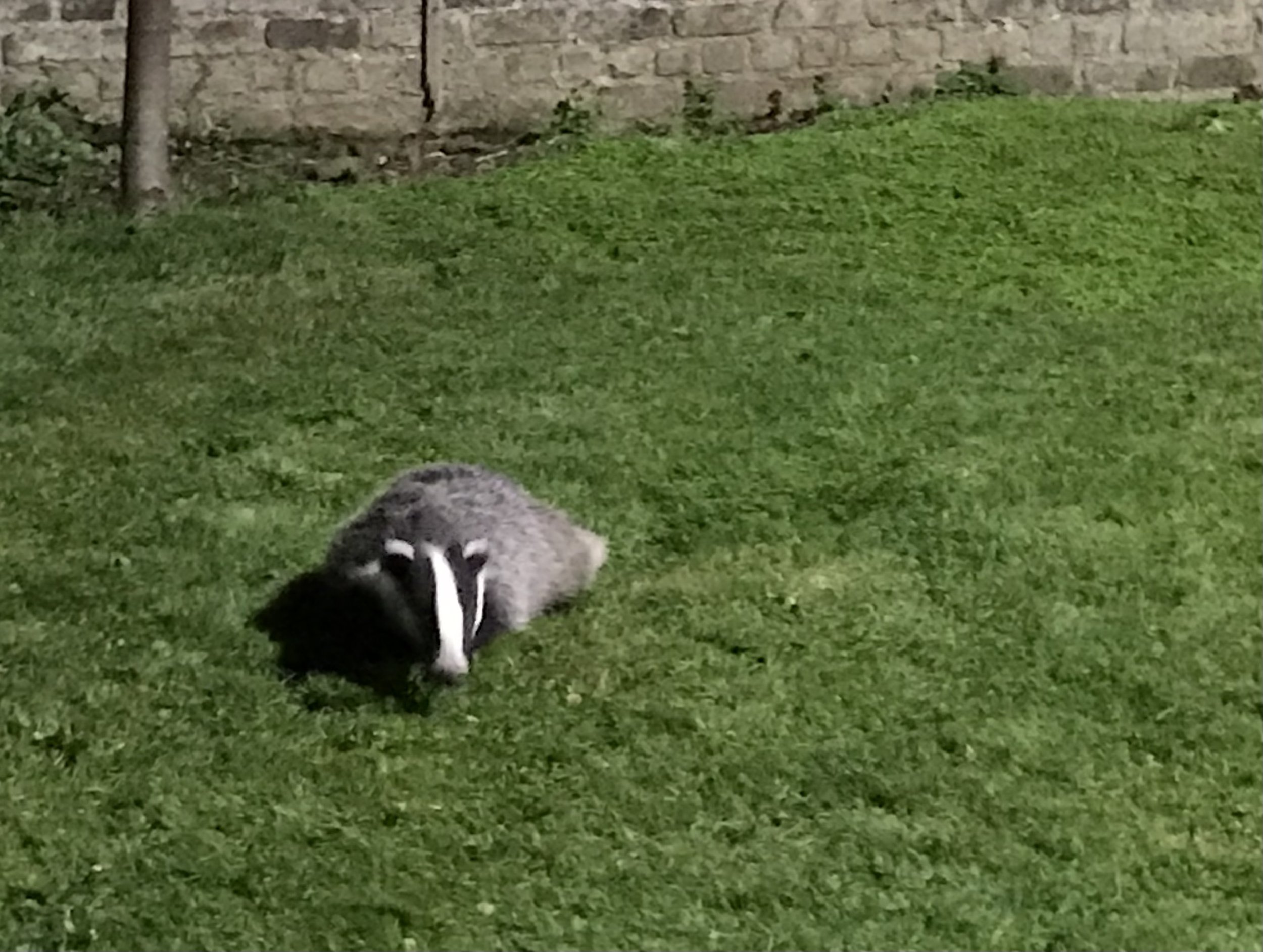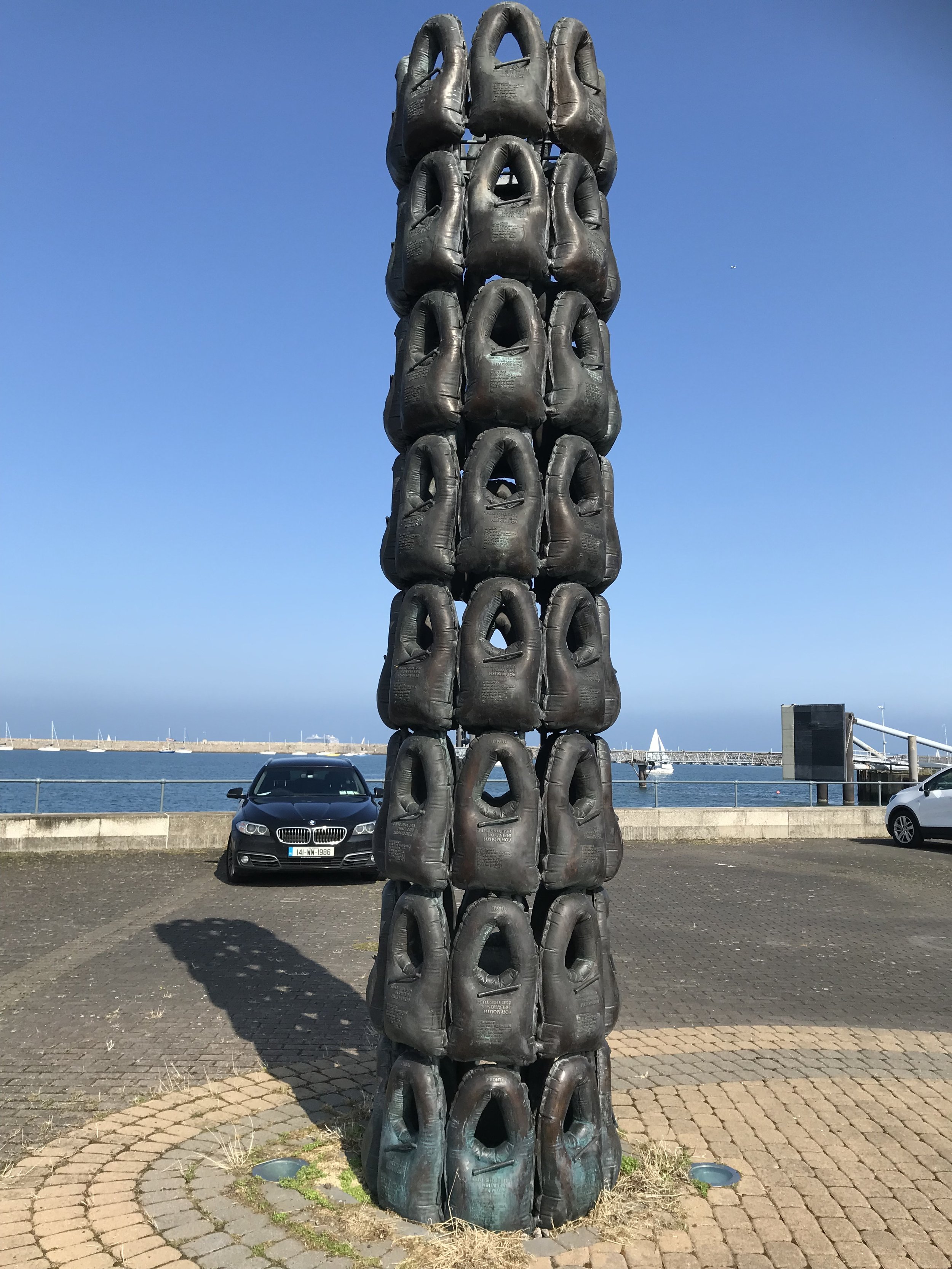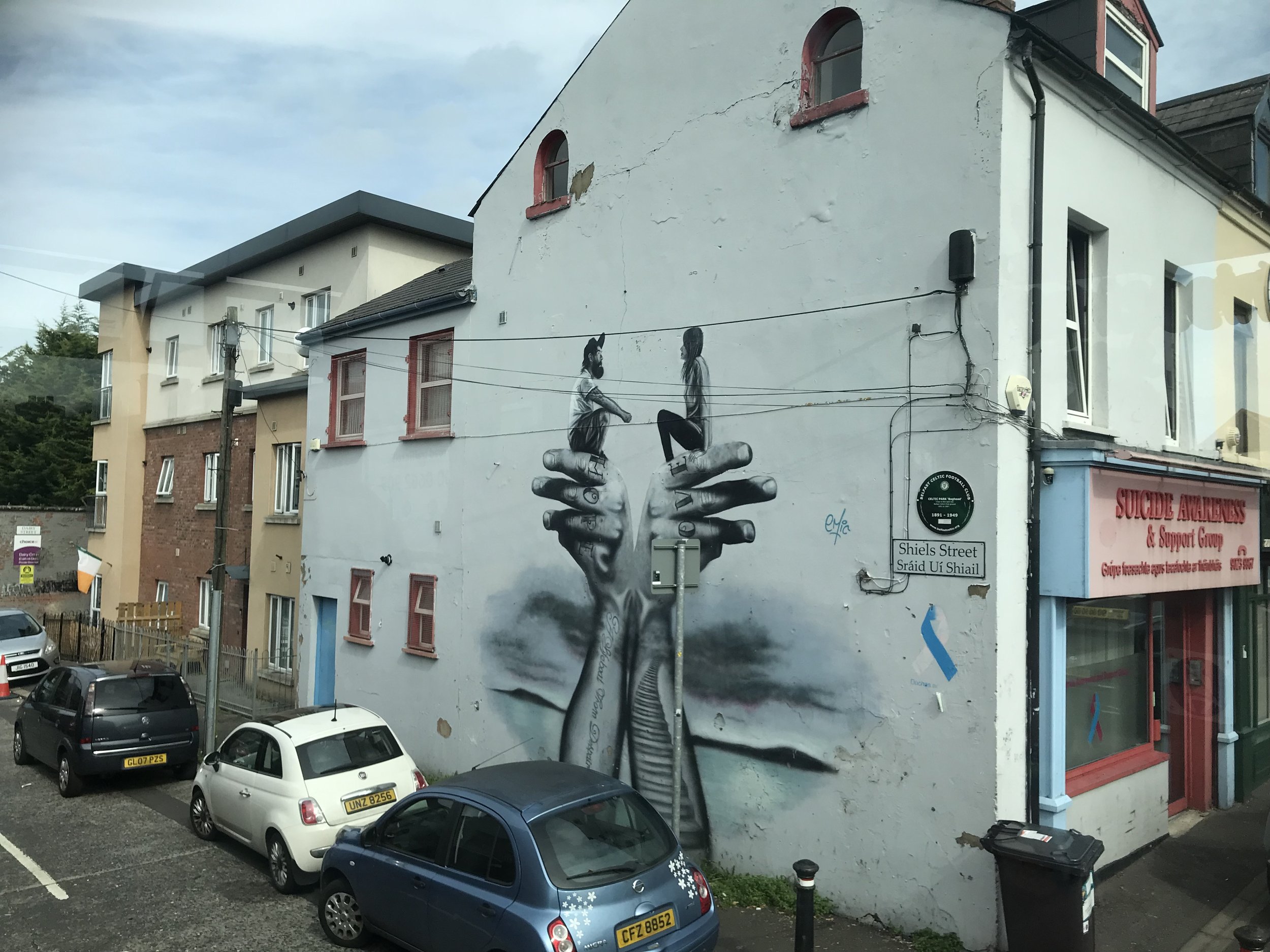Written from Belfast … after 3 days in Monkstown, near Dún Laoghaire (‘Kingstown’, when under British rule) on the Granite Coast, on the southern edge of the Dublin sprawl.
I’m beginning to feel ‘on tour’, as images and memories of home blur only to be supplanted by so much here, in the locale as well as in the sense of myself in transit. So much is different, the same and evolving. The sense of being without an anchor pervades at times. I keep active: walking, visiting galleries, finding food, writing and reading in my room, and listening to local radio and music. I write about my plans for this adventure (if that is what it is), attempt to précis my intentions and brighten the scope of what I want to express in the next two months. Is this art? is the question that will inhabit most of what I hope to do when composing, writing, drawing, and painting; and in my improvisation practice, my primary intention.
I haven’t felt the disoriented time-warp sensation that usually lingers for several days, the legacy of flights between hemispheres and time-zones, but I have been wakeful in the early hours, the time to practise slow breathing or listen to local radio.
After six days based at Trinity College in a tiny student room at the top of five flights of stairs – certainly not conducive to moving a large suitcase up and down without a lift – I caught a train south, that skirted around Dublin Bay, to Monkstown, near Dún Laoghaire, an area stacked with Georgian buildings and a plethora of architectural species built after Irish Independence and the shattering of British control. My host tells me many Georgian building were dismantled after neglect. There’s beauty in the heterogeneity, the shoreline and the extensive open spaces and parkland left vacant after deconstruction.
The railway line was partly built on reclaimed land (a ‘dyke’). It passes Sandymount, made famous by James Joyce. In Ulysses, Stephen says “I am here” when he stands on, and then walks, the wide strand’s flats at low tide. When I look across the wall to the strand from the train people are wading in shallows out past the grey sand that fills the foreground. At low tide you’ll not find enough depth above your knees unless you walk a long way out into the bay. The stunning early autumn weather is tossing people out of their homes after two months of incessant rain, wind and storms.
I’m staying with a friend – an artist I met a few years ago in the Burren – in a quiet apartment a short distance from the railway line and the sea. The extended park wrapping the apartment building brings in nocturnal visitors: badgers, red foxes, squirrels; and, during the day, many kinds of birds – blue tits, magpies, wood pigeons, bullfinches and robins – that vie for seed from cylinders hanging from the ceiling of the porch. Last night I was thrilled to see three badgers close to the back porch, snuffling about in the grass for feed with their long, striped snouts. When I stepped out to video the badgers they remained, unconcerned; but when I tried to video the red fox it slunk off under the trees. It returned the following night when there was no competition and I tried to be completely still with my camera.
My Monkstown host took me on a tour of Dublin that included: a history tour of a heritage eighteenth century terrace, reassigned to social housing for Dubliners in the early twentieth century; the Natural History Museum; and the Museum of Literature Ireland where James Joyce and Yeats feature almost to the point of annihilating anyone else. But if you look there is a wall of names and photographs celebrating others, including: Anne Enright, Medbh McGuckian, Michael Longley, Seamus Heaney, Sean O’Cassey, Samuel Becket, Eavan Boland, Doireann Ni Ghriofa, Eiléan Ni Chuilleanáin, Marion Keyes and many others I’d never heard of. Since then I’ve read Claire Keegan’s Small Things Like This. It’s everything a novella should be, and I hope she was on that wall. The film An Cailín Ciúin (The Quiet Girl) was based on her novel Foster. I loved that film too.
Lifejackets sculpture, Dún Laoghaire, Granite Coast, South Dublin.
Belfast (& Northern Ireland generally) does graffiti like nowhere else I know. This one’s creative! Don’t mention the war!


